In these times of chaos there seems to be a proliferation of new ways of thinking about the nature of reality springing up

There are some people who I follow who have done such interesting stuff in their lives, and whose new work continues to help me think in new ways. Buster Benson is one of these, and his latest post (unfortunately on Substack) is the beginnings of a choose-your-own-adventure style quiz about cosmology, a.k.a. “the nature of reality.”
So… I’ve been thinking a lot about cosmologies, and how in these times of chaos there seems to be a proliferation of new ways of thinking about the nature of reality springing up. If you have a few moments, can you take this short quiz and let me know which result you got, and how you feel about it?
Below you’ll find a some questions designed to help you identify and share your fundamental beliefs about the nature of reality (aka your cosmology). It’s not meant to be a comprehensive survey of all possible cosmologies, but rather a tool to help you identify your own cosmology and perhaps to spark a fun conversation with others. It’s also not meant to critique or judge any of the cosmologies for being more or less true, more or less useful, or more or less good — but rather meant to be window of observation into what beliefs exist out there amongst you all right now.
FWIW, I came out as the following, which (as I commented on Buster’s post) is entirely unsurprising to me:
Pragmatic Instrumentalism — You see scientific theories as powerful tools for prediction and control rather than literal descriptions of an ultimate reality. The value of materialism lies in its extraordinary practical utility and predictive success, not in metaphysical claims about what “really” exists. This pragmatic approach sidesteps unresolvable metaphysical debates while maintaining the full practical power of scientific methodology.
Source: Buster’s Rickshaw
Image: Good Free Photos
Love the casual vibe here
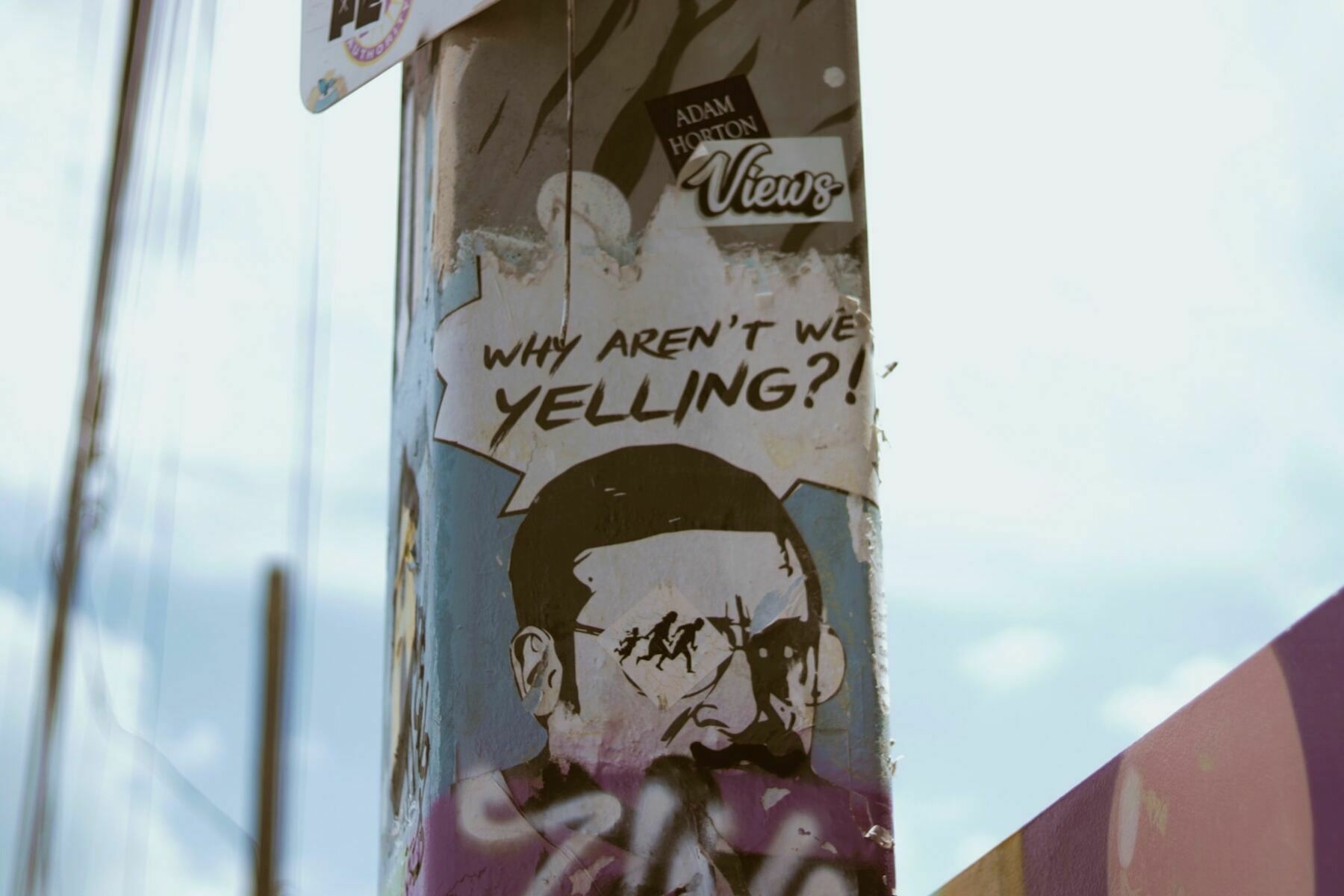
There’s a guy I no longer interact with because I found him too angry. But when I used to follow him, he used to talk about how Big Tech’s plan was to ‘farm’ us. It’s a very Matrix-esque metaphor, but given recent developments and collaborations between Big Tech and the government in the US, perhaps not incorrect?
Businesses like predictability. There’s nothing particularly wrong with that, per se — but, at scale, that can become a bit weird. Think, for example, how odd it is to be reduced to a single button shaped like a ‘heart’ on some social networks to be able to ‘react’ to what someone else has posted. There was a time when people would actually comment more, but the like button has reduced that.
Now, of course, some social networks allow you to ‘react’ in different ways: ‘applause’, perhaps, or maybe you might want to mark that something is ‘insightful’. We might consider doing so as being “better than nothing,” but is it? How does it rearrange our interactions with one another, allowing a particular technology platform (with its own set of affordances and norms, etc.) to intermediate our interactions?
Fast-forward to this month and, of course, Meta is experimenting with a feature that allows people to use AI to reply to posts. This is already a thing on LinkedIn. It’s going about as well as you’d expect.
AI is all over social media. We have AI influencers, AI content, and AI accounts — and, now, it looks like we might get AI comments on Instagram posts, too. What are any of us doing this for anymore?
App researcher Jonah Manzano shared a post on Threads and a video on TikTok showing how some Instagram users now notice a pencil with a star icon in their comments field, allowing them to post AI-generated comments under posts and videos.
[…]
In the video on TikTok that Manzano shared, three comment options are: “Cute living room setup!” “love the casual vibe here,” and “gray cap is so cool.” Unfortunately, all three of these are clearly computer-generated slop and take an already shaky human interaction down a notch.
It’s hard to know why you’d want to remove the human element from every aspect of social media, but Instagram seems to be going to try it anyway.
Source: Mashable
Image: Mimi Di Cianni
Their knowledge of life owed nothing to their sporadic presence in the inner sanctum of university colleges and departments
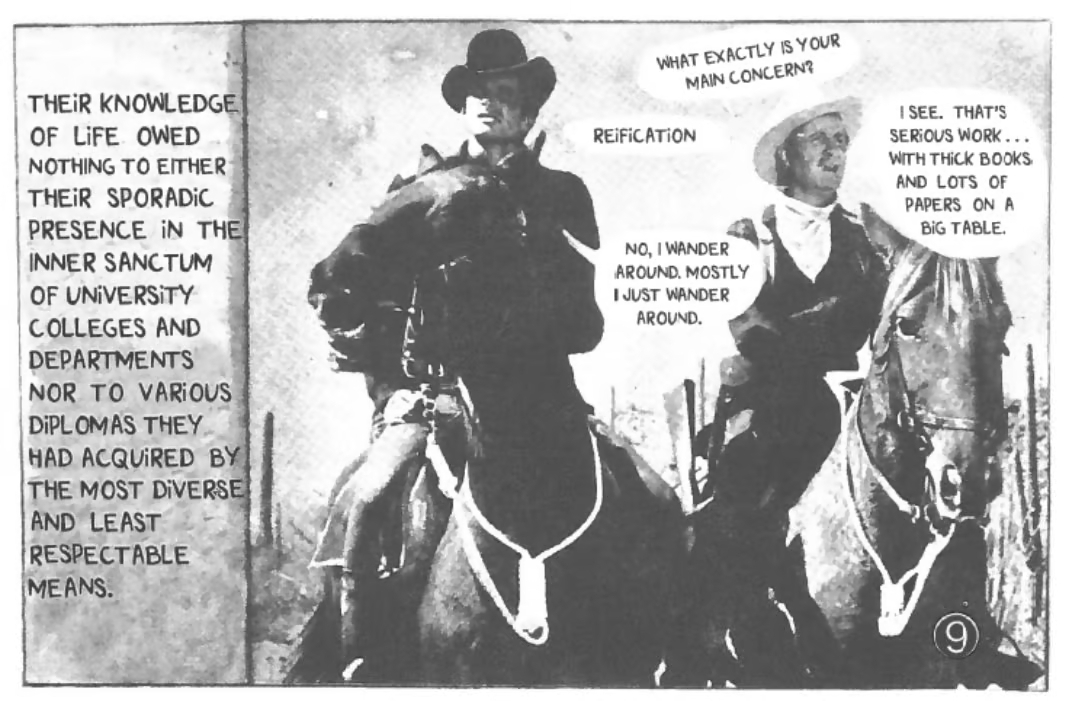
Warren Ellis' Orbital Operations is always worth reading, but the most recent issue in particular is a goldmine. I could post every image from it, including the Bayeux Tapestry one. But my mother reads this, and although I’m middle-aged, I still don’t want to disappoint her by including unnecessary profanity here 😅
What interests me about the above image is that this kind of re-contextualisation has been going on for so long, and massively pre-dates the internet. As someone who was a mid-teenager when first getting onto the internet, I’m too young to remember anything like this.
I need to think more about this, but, inspired by Episode #62 of the In Bed With The Right podcast, there’s a way in which you can see AI-generated imagery shared on social media by ‘conservatives’ as the fascist-adjacent version of this. Except, instead of being clever commentary, it’s lazy nostalgia-baiting.
1966: University of Strasbourg Student Union funds are lifted by Situationist sympathisers to print Andre Bertrand’s short comic RETURN OF THE DURUTTI COLUMN, which used stills from Hollywood movies in a process then termed detournement: familiar materials recontextualised in opposition (or at strange angles) to their original intent. This is something so common on the internet now that most people may not know there’s a word for it. The only useful Google hit I can find for Andre Bertrand today is, funnily enough, the Wikipedia page for an attorney who specialises in copyright law.
Source and image: Orbital Operations
Explorers launching into the Fediverse

You may or may not be aware that I use a service called Micro.blog to run Thought Shrapnel these days. It’s the work of a small team, who do a great job. But I bump up against the edges of it quite a lot, especially when it comes to the newsletter/digest.
So I’ve thought for a while about switching to Ghost. Not only is it Open Source, but for the last year they’ve been figuring out ActivityPub integration. That’s the protocol that underpins Fediverse apps such as Mastodon, Pixelfed, and Bonfire. Long story short, there’s a lot to think about in terms of user experience and performance, so getting it right takes a while.
They’ve just announced that those using their Ghost(Pro) hosting can try out the ActivityPub integration for the first time. I’m very tempted to switch, but the cost ($40/month for the number of subscribers we have around these parts) is putting me off. Perhaps if I encouraged more people to become supporters…?
Today we’re opening a public beta for our social web integration in Ghost. For the first time, any site on Ghost(Pro) can now try out ActivityPub.
[T]hanks for your patience! It hasn’t been easy to get this far, but we’re excited to hear what you think as you become one of our very first explorers to launch into the Fediverse.
Source: Ghost Newsletter
Image: Markus Spiske
Don't just put up with how websites are presented to you by default!
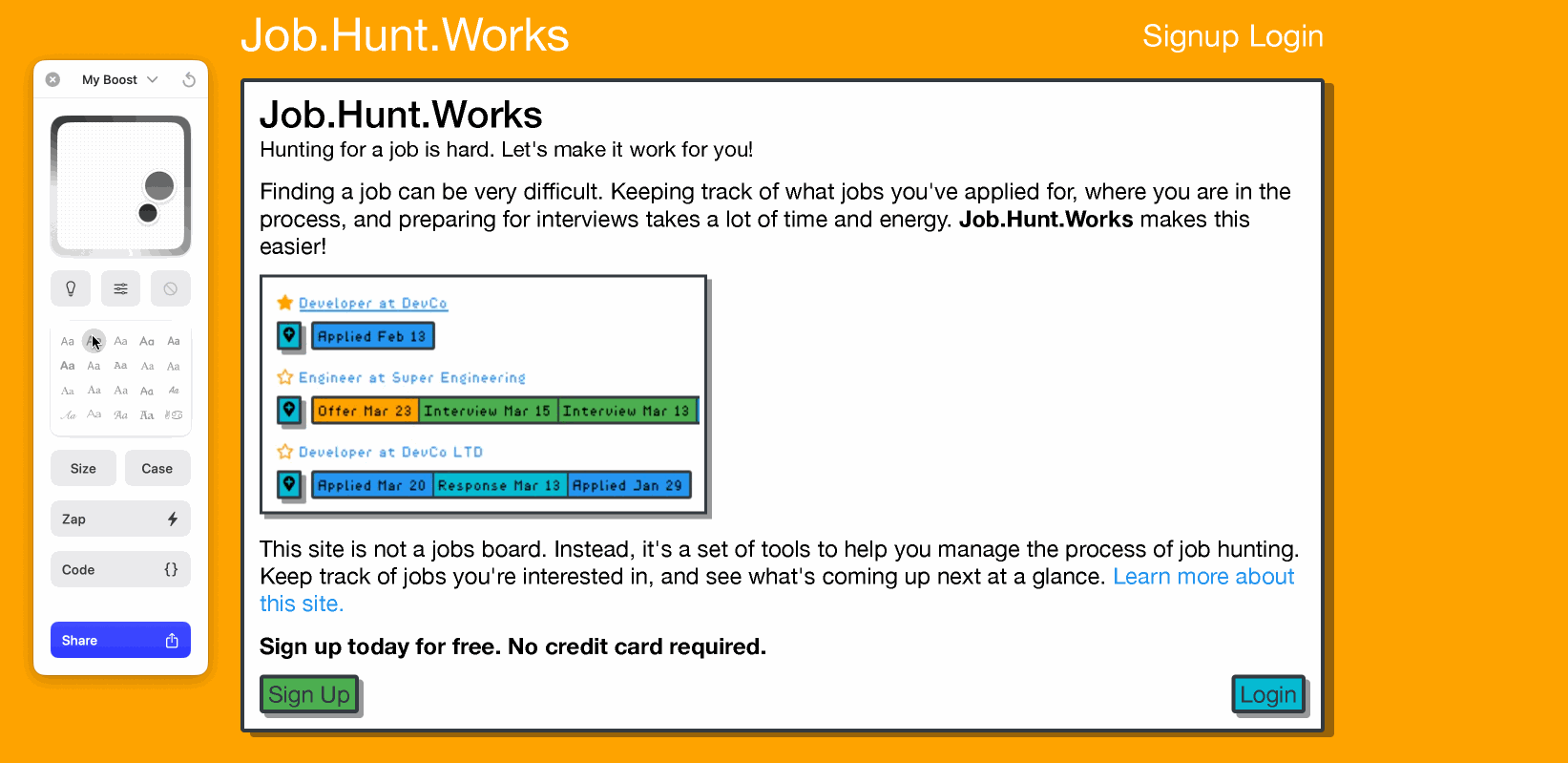
I’m sharing this not for the functionality of site, although I’m sure it provides a useful service. Instead, I’m sharing it to demonstrate a point: on the web, you can consume content however you choose. Don’t just put up with how it’s presented to you by default! I could go on about how this a key part of developing digital literacies, but I won’t 😉
In the above gif, I’m using the built in ‘Boosts’ feature of the Arc web browser to change the extremely poor choice of a tiny 8-bit font for something… more readable. This built-in functionality is something you can achieve on other web browsers using tools such as Tampermonkey and Stylish.
Source: Job.Hunt.Works
Affordable building materials out of agricultural waste bonded with oyster-mushroom mycelium

Kenya, much like the UK, has a housing crisis. Mtamu Kililo has an unusual plan to address it: mushrooms. Having just finished Overstory, I am extremely receptive to the kind of nature-first solution that Kililo is proposing goes more mainstream.
One thing I’ve learned during my career to date is that most people are aspirational, meaning that proving that something works for rich or forward-thinking people makes it more palatable to others. For example, if the mushroom bricks discussed here feature on Grand Designs then they’re likely to get some traction.
I wish the world were different and that we could learn from societies that have lived in harmony with nature for millennia. But here we are. I hope that MycoTile is successful and creates a whole new sector of sustainable building materials using waste products. Fingers crossed!
I’m the co-founder and chief executive of MycoTile, which works to produce affordable building materials out of agricultural waste bonded with oyster-mushroom mycelium, a network of tiny filaments that forms a root-like structure for the mushroom.
[…]
MycoTile’s insulation panels have been installed in a few projects, including in student accommodation, and we have seen that the material works. It greatly reduced the sound travelling from one room to the next, and helped to regulate the temperature inside. This insulation is affordable, costing about two-thirds of the price of conventional insulation. And unlike those materials, it can be composted at the end of the building’s life.
[…] The insulation tiles are a success; now we’re working on developing a sturdy block like a brick. When we can produce a brick to build external walls and partitions, it will be a huge step towards affordable housing.
Source: Nature (archive version)
Image: Rachel Horton-Kitchlew
Work is part of our lives, a big part to be sure, but what if it wasn’t our whole life?

I’m composing this on the train on my way back home from a CoTech gathering in London. Post-pandemic, I spend 99% of my working life at home, especially now that there so few in-person events. So I was really glad to spend time among like-minded people and talk about ways we can work together a bit more.
The people I spent time with today are part of a work community. Some of them I count as friends, but none live very close to me. I am, therefore, quite detached from my geographic community, with my only really connection to the place where I live coming through shopping, my kids' sporting activities, and my (temporarily paused) gym membership.
This post by Mike Monteiro responds to a reader question about whether they can be happy even if they hate their job. Monteiro, who identifies as Gen X, harks back to his youth, talking about how school and work was compartmentalised so that people could be themselves outside of those strictures.
The problem now is that, for reasons Monteiro goes into, work invades our homes and community life, hollowing and emptying it out until it’s devoid of meaning. As a result, we have, perhaps unrealistic expectations of what work can provide for us. Except, of course, if you own your own business and work with your friends. I just wish they were nearer by and I got to hang out with them more.
Perhaps I need more offline hobbies.
When we think of our community, we’re likely to picture the people at work. Because it’s where we’re spending the majority of our time. This is by design, but it isn’t our design. It’s the company’s design. In that earlier era, when we still drank from garden hoses, losing a job sucked, but it mostly didn’t take your community with it. In this new era, losing a job means getting gutted. Not only do you lose your paycheck, but you lose access to all the people and places where you used to have your non-work-but-actually-at-work fun. And while your old co-workers will promise that you can still hang out outside work (they mean it, by the way), they’ll soon realize that they don’t really do much “outside work.”
The pandemic put a little bit of a dent in this plan, of course, because you were now working from home, but they adjusted quickly to this by keeping you on wall-to-wall Zoom calls for 12 hours a day. Which wasn’t completely sustainable (even though they said it would be) because when your zoom calls are happening on a laptop facing the window, you eventually start peeking out at what’s beyond that window, and you get curious…
Work is part of our lives, a big part to be sure, but what if it wasn’t our whole life?
They want you to return to work, to their simulation of happiness and community, because they’re afraid that if you don’t you might remember that there was a time when you were free. And you were happy. And you drank from garden hoses.
Source: Mike Monteiro
Image: NOAA
An incomplete collection of charts
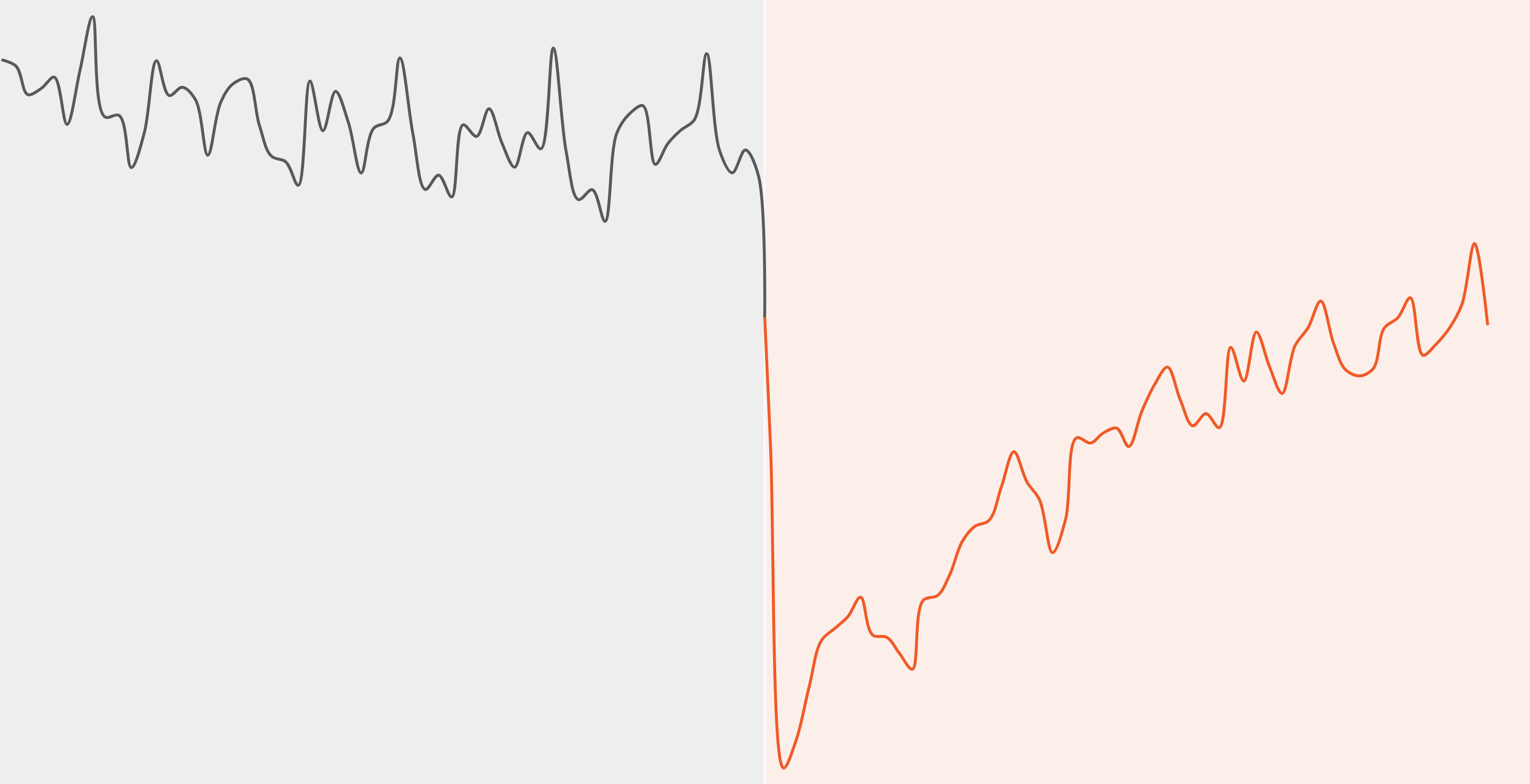
Some pretty stark charts showing the impact of the Covid-19 pandemic on the world, in this case using data about the USA. What I like about the way they’ve done this is that, for many of them, ‘trend lines’ are included which allow you to see whether things have gone back to ‘normal’ or stayed… weird.
Over here, unlike other developed nations, the UK has experienced a sharp rise in the post-pandemic number of health-related benefit claims. The number of 16 to 64 year-olds on disability benefits in England and Wales now stands at 2.9m, an increase of almost a million. Around half of those are mental-health related claims. It is ridiculous, therefore that the Labour government is planning to cut disability benefits while “help[ing] those who can work into work.” Forcing, more like.
My wife and I “celebrated” our 40th birthdays during lockdown, so the pandemic has pretty much cleaved our lives into two: there was what came before and now what has come after. At the moment, I massively preferred what came before. How about you?
Decades from now, the pandemic will be visible in the historical data of nearly anything measurable today: an unmistakable spike, dip or jolt that officially began for Americans five years ago this week.
Here’s an incomplete collection of charts that capture that break — across the economy, health care, education, work, family life and more.
Source & image: The New York Times
The magic of browsing the web isn't quite gone, but it's waiting to be reinvented
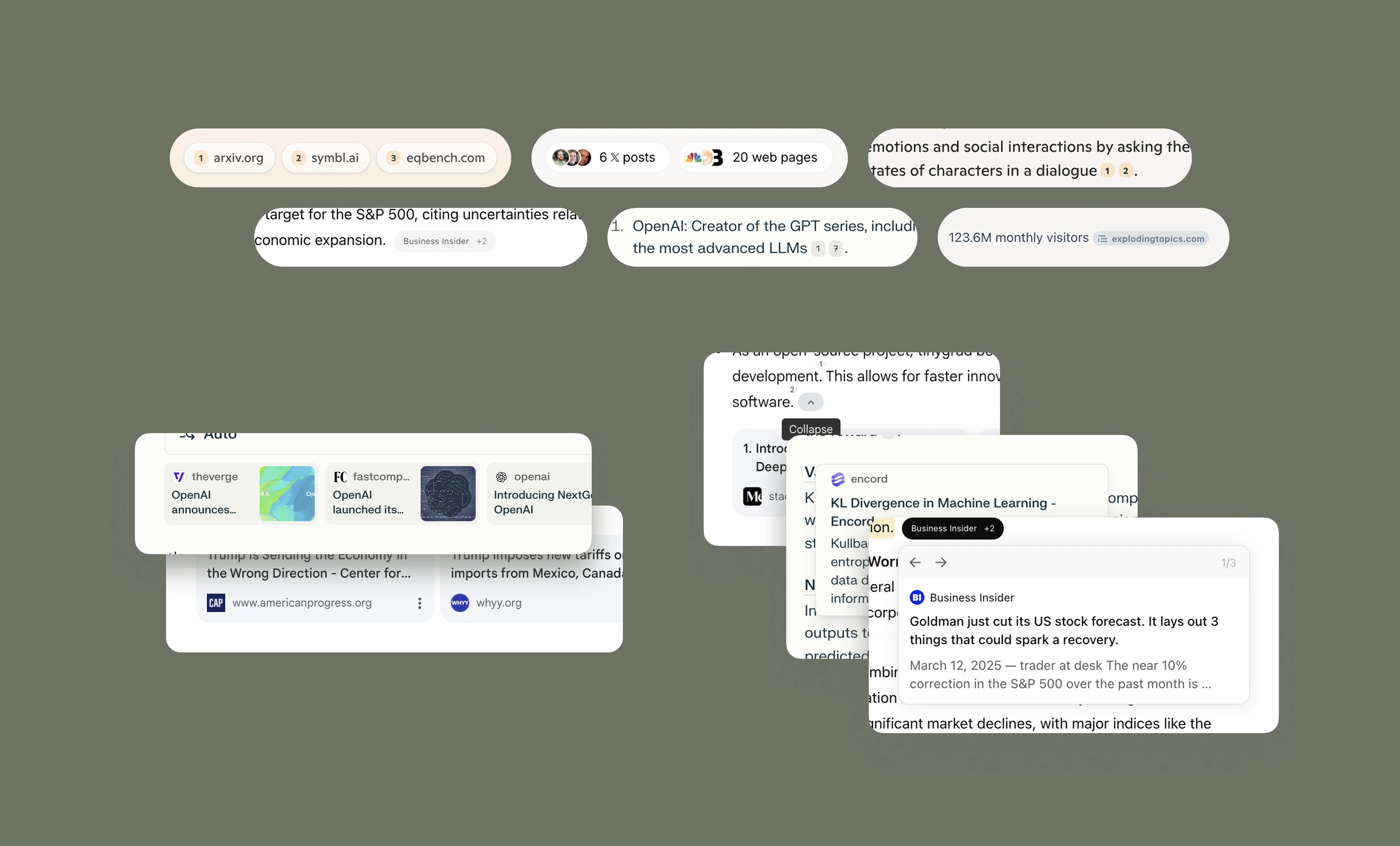
I’ve been following Paul Stamatiou, aka ‘Stammy’, since he was at Georgia Tech. He’s worked at Twitter, co-founded a couple of startups, and now seems to be pivoting into AI search.
What I like about Stammy’s deep dive blog posts is that he blends an understanding of technology through the lens of design with a level of pragmatism you don’t usually see. In this post, he talks about the serendipity of the web we’re increasingly losing in favour of AI answers. But, at the same time, he talks about the convenience and value of those answers, wondering if there’s another way of using these tools to serve human curiosity.
To my mind, there’s a design angle here on the ‘supply’ side, but there’s also an opportunity to cultivate AI literacies in order to use these kind of tools effectively.
Browsing with traditional search engines wasn’t exactly seamless but you were in the driver’s seat. You would occasionally end up on some obscure personal site or forum that was unexpectedly right up your alley.
Those magical detours defined our web experience, enriching us with insight and creativity while establishing human connections. Today’s instant answers with these AI tools sacrifice this beautiful chaos that once made the internet so captivating. But there’s hope—a new kind of browsing experience might just be around the corner.
[…]
Serendipity while browsing the web wasn’t just a byproduct of how the web began to form. It stretched our empathy by exposing us to diverse voices, nudged us out of echo chambers, and kept our web from becoming monotonous.
That style of surfing the web is fading away. What social media hasn’t already taken over, or search engines haven’t already diluted by sending us to ad-laden mainstream sites, is now steadily being eroded by AI-powered answer engines.
[…]
Today’s AI answer engines face fundamental challenges that go beyond the feeling of nostalgia for the old web, surfacing some bespoke notion about serendipitous discovery, or wanting more indie content bubbled up. The real issues—weak attribution, black-box decision-making, and homogenized responses—threaten to flatten rather than enrich how we use the web. Browsing the web isn’t and shouldn’t be a one size fits all experience.
The current generation of AI tools faces a prodigious challenge: how can they surprise and delight you when they know almost nothing about you?
[…]
AI personalization doesn’t have to be about consuming every detail of your life or cloning yourself. We’ve fended off giving too much personal data to individual companies, why start now? You don’t need to be digitally cloned to help you throughout your day. Even a little bit of info about your past interactions, goals, and interests can go a long way to delivering experiences that resonate more deeply with you.
[…]
Even with light personalization, AI answer engines could meaningfully tailor their responses to you. They would know you’re very technical and experienced with the topic at hand to skip the basics and dive deeper into technical concepts. They would know you’ve been writing about technology for 20 years and really enjoy the underlying ways things work and always want that deeper understanding. And so many other things that might seem like minute details at first, but combined really add up.
[…]
The magic of browsing the web isn’t quite gone, but it’s waiting to be reinvented.
Source & image: Paul Stamatiou
When in doubt, go see a doc!

As people who read my weeknotes will be aware, I’ve got some kind of undiagnosed heart condition going on at the moment. This has meant that I’ve gone from running three times per week (20-25km) and hitting the gym three times a week, to not being able to walk very far without my heart rate spiking.
This week, I’ve had Angina and arrhythmia ruled out, but I’ve got to have further tests such as an echocardiogram and MRI. The consultant said that he was going to be “open and honest” with me that “it might take a long time” to figure out what’s wrong with me, and that I’m going to have to make some “lifestyle changes.”
NHS staff are under pressure and, for the most part, do a great job. They don’t have a long time to spend with patients, which is why I’ve started using AI tools such as Perplexity to investigate my symptoms. It’s important to know that this is alongside the tests I’m having done; unless I go private (not going to happen) I’ve got a bit of wait time before my next tests.
I know that some people reading this will be shocked that I would discuss my health details with an LLM. But, I would say, don’t knock it until you’ve tried it. I run one of the world’s most secure operating systems on my mobile device, but I’m telling some AI about my medical issues? Yep. I contain multitudes.
In the post I’ve excerpted below, Brett McKay from The Art of Manliness gives 30 ways in which AI can help make your life easier. I’ve used about half of them. But, even if you use private mode, a temporary window, a local LLM or some other way of obfuscating your identity, I’d give it a try.
There are some legit concerns to have about AI, to be sure. It’s not always accurate and not yet great at everything. But if used in the right way and with the right stance, AI can be really handy, improving your life and making it better and easier. It’s like having a personal assistant without paying personal assistant prices.
[…]
Figure out a health issue. I’ve replaced Dr. Google with Dr. ChatGPT. I’ll just type in my symptoms (and sometimes upload a picture — don’t forget that AI can analyze images!) and ask ChatGPT about the potential causes. For example, I’ve been having some pain in my quads lately. I couldn’t determine if it was a muscle strain or a tendon issue. So I told ChatGPT where my pain was, what the pain felt like, when I experienced it, and what precipitated the pain. ChatGPT helped me figure out that I’m dealing with a muscle strain and not a tendon issue. My daughter had some bumps show up on her foot the other week, and I couldn’t tell what it was. So I snapped a pic, uploaded it to ChatGPT, and asked, “What is this?” ChatGPT ruled it a bug bite. Should you rely on ChatGPT to diagnose you for big issues? No, but it can help you troubleshoot minor problems and know when to consult a healthcare provider (when in doubt, go see a doc!).
Explain medical test results. I’ve used ChatGPT to help explain medical test results I’ve gotten in terms I can understand. My father-in-law recently got an EKG and the cardiologist only spent a few minutes giving him a cursory explanation of the results. My FIL then went home and ran the results through AI, which gave him a lot more details.
Source: The Art of Manliness
Heaven is high, and the emperor is far away
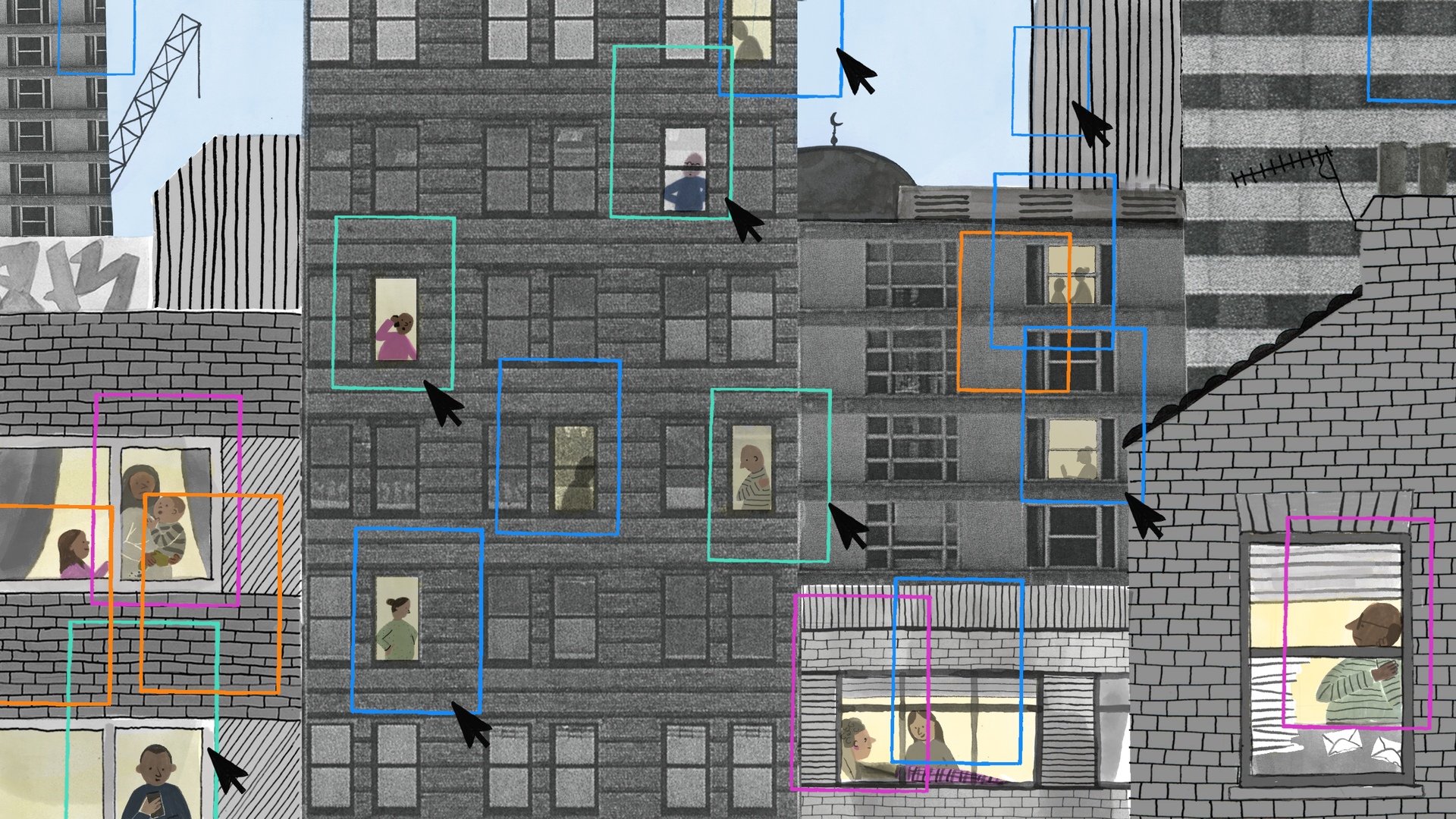
Ben Buchanan, until recently the Biden administration’s AI special adviser, joins Ezra Klein to discuss lots of things about AI in the past, present, and future. It’s particularly interesting because, as Klein points out, Buchanan “is not a guy working for an A.I. lab. So he’s not being paid by the big A.I. labs to tell you this technology is coming.”
There’s a lot of US-specific conversation, but I’m most interested in the impact on labour markets, which I think we’re already seeing even with Artificial General Intelligence (AGI), and the rise of the surveillance state.
One of the things which is most markedly different between my childhood and that of my two teenagers is the amount of surveillance and tracking of everyday life which is seen as ‘normal’. Even small, relatively prosaic things, such as messaging app showing by default that a message has been ‘read’. Or location tracking, whether it’s via Snap Maps, ANPR cameras on roads, or CCTV in city centres.
As mentioned in a previous post, you need to be very careful about norms, policies, and laws you encode into AI enforcement / policing / standardisation.
I would decompose this question about A.I. and autocracy or the surveillance state into two parts.
The first is the China piece of this. How does this play out in a state that is truly, in its bones, an autocracy and doesn’t even make any pretense toward democracy?
I think we could agree pretty quickly here that this makes very tangible something that is probably core to the aspiration of their society — of a level of control that only an A.I. system could help bring about. I just find that terrifying.
As an aside, there’s a saying in both Russian and Chinese: “Heaven is high, and the emperor is far away.”
Historically, even in those autocracies, there was some kind of space where the state couldn’t intrude because of the scale and the breadth of the nation. And in those autocracies, A.I. could make the force of government power worse.
Then there’s the more interesting question in the United States: What is the relationship between A.I. and democracy?
I share some of the discomfort here. There have been thinkers, historically, who have said that part of the ways we revise our laws is when people break the laws. There’s a space for that, and I think there is a humanness to our justice system that I wouldn’t want to lose.
We tasked the Department of Justice to run a process and think about this and come up with principles for the use of A.I. in criminal justice. In some cases, there are advantages to it — like cases are treated alike with the machine.
But also there’s tremendous risk of bias and discrimination and so forth because the systems are flawed and, in some cases, because the systems are ubiquitous. And I do think there is a risk of a fundamental encroachment on rights from the widespread unchecked use of A.I. in the law enforcement system that we should be very alert to and that I, as a citizen, have grave concerns about.
Source: The Ezra Klein Show (archived version)
Image: Emily Rand & LOTI
It errored out half an hour in, which is when I decided to throw in the towel
I’m kind of sick about posting about AI so much, but I did want to point out something with another new thing. This video is for Manus “a general AI agent that bridges minds and actions: it doesn’t just think, it delivers results.” Apparently, you can just leave it to do things for you. Except, erm, you can’t.
Here’s the promo video:
Notice that the three examples are essentially about ranking, whether that’s people, property, or stocks. Also, are all of the fake job applicants it shows male? As TechCrunch found, doing something else which probably should be pretty straightforward, causes some showstopping problems.
“Glimpses of AGI,” indeed 🙄
I asked the platform to handle what seemed to me like a pretty straightforward request: order a fried chicken sandwich from a top-rated fast food joint in my delivery range. After about 10 minutes, Manus crashed. On the second attempt, it found a menu item that met my criteria, but Manus couldn’t complete the ordering process — or provide a checkout link, even.
Manus similarly whiffed when I asked it to book a flight from NYC to Japan. Given instructions that I thought didn’t leave much room for ambiguity (e.g. “look for a business-class flight, prioritizing price and flexible dates”), the best Manus could do was serve up links to fares across several airline websites and airfare search engines like Kayak, some of which were broken.
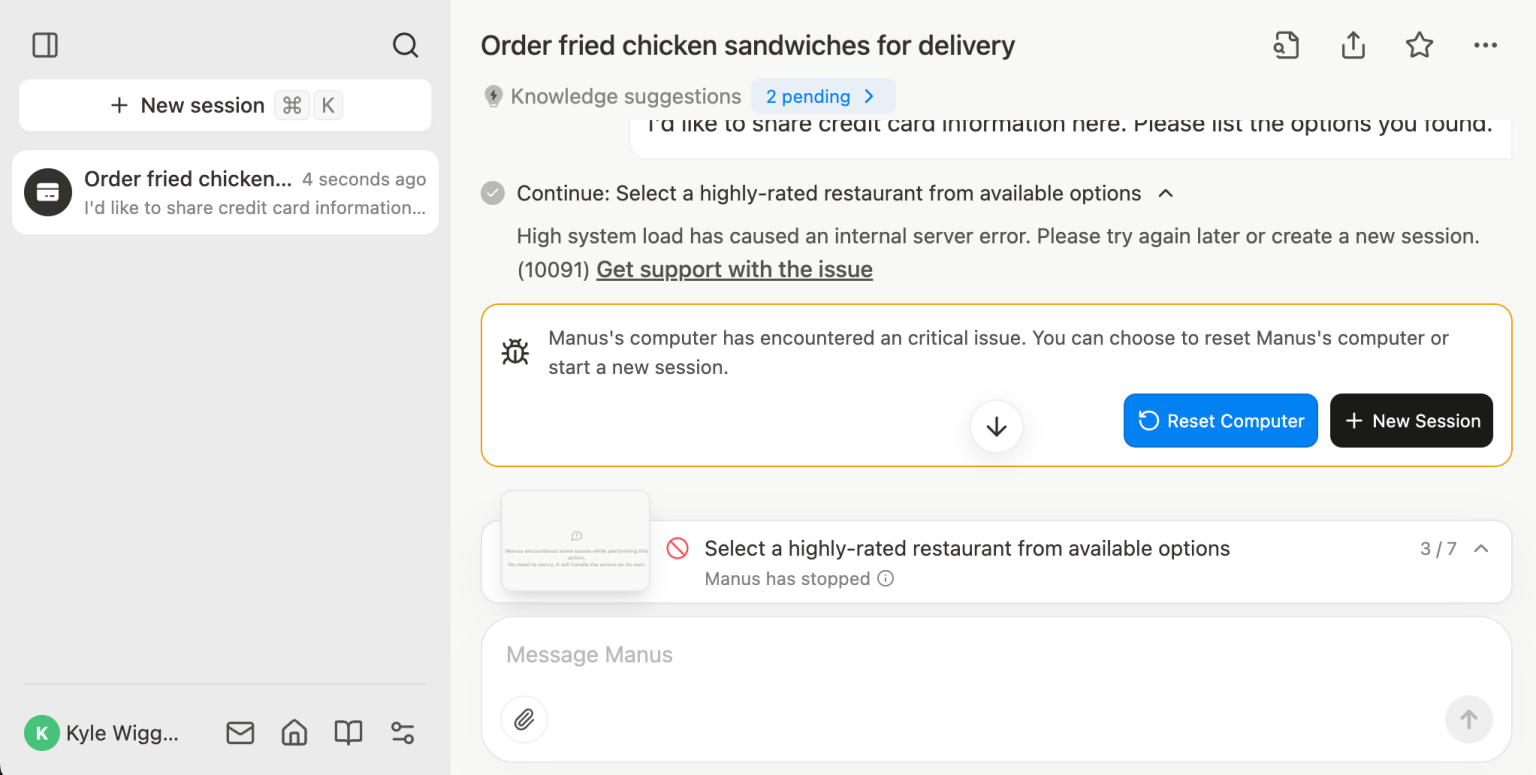
Hoping the next few tasks might be the charm, I told Manus to reserve a table for one at a restaurant within walking distance. It failed after a few minutes. Then I asked the platform to build a Naruto-inspired fighting game. It errored out half an hour in, which is when I decided to throw in the towel.
Source and image: TechCrunch
The more we embed today’s norms into these systems, the harder it will be to course-correct later
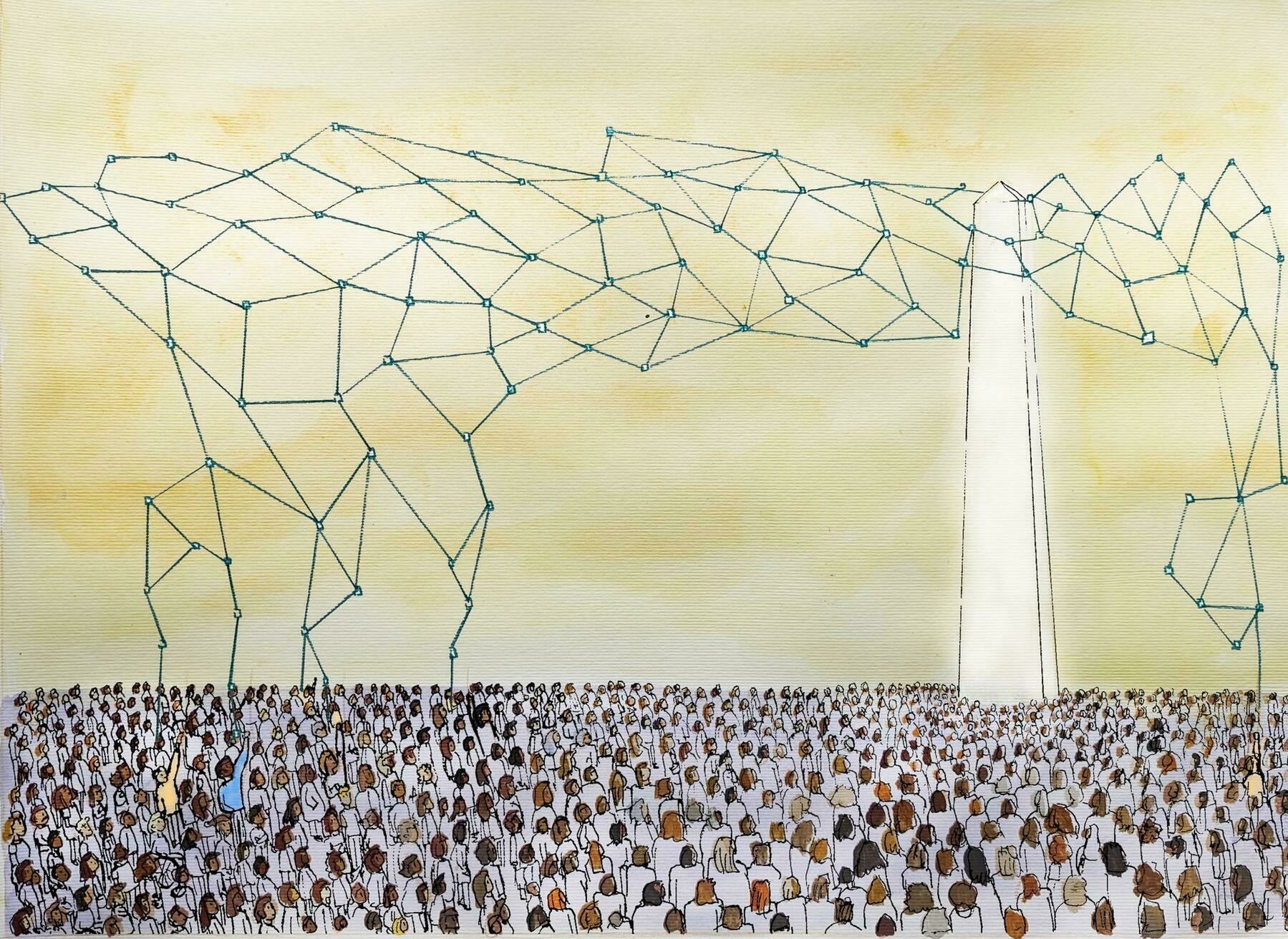
WAO wrote a report on Harnessing AI for environmental justice which serves as the background to this post by Christian Graham from Friends of the Earth. He points out that LLMs can be problematic in terms of human progress in at least a couple of important ways.
First, referencing existing norms and frameworks could make it more difficult for new, exciting, and innovative ideas to break through. Second, AI enforcement / policing / standardisation could make it difficult for us to correct course away from a problematic trajectory.
It’s well worth a read. Even though I’ve found LLMs to be extremely useful as a ‘thought partner’ for coming with new angles on existing problems, I’m not sure the majority of people would use them in such a nuanced way. After all, the US Secretary of State is already threatening to use AI to revoke visas of foreign students who appear “pro-Hamas”.
(On a more prosaic level, can we expect much nuance when, last month, ‘Google’ was the sixth most-searched term… on Google? People, including politicians and policymakers, value convenience even/over everything else)
No one built this to be unjust. It’s just an AI doing its job: optimising for carbon cuts, personal accountability and cold, hard data. Yet baked into it are early 21st-century blind spots: climate as your burden, not the system’s. And AI as some impartial oracle.
This is technological lock-in. Not a grand conspiracy, but a thousand quiet choices, hardening into a future we can’t easily unwrite.
[…]
[S]tability isn’t always a good thing. The same features that make AI useful could also make it inflexible, resistant to new ideas and blind to the possibility of better alternatives:
- Old biases risk becoming permanent – AI trained on today’s moral and economic frameworks might prioritise corporate-led sustainability initiatives over grassroots action or overvalue GDP growth as the main measure of success.
- Future breakthroughs could struggle to take hold – Just as a Victorian-trained AI might have discouraged Darwin from publishing, future scientists, activists, and policymakers could find themselves fighting against AI-driven inertia.
- AI governance might become self-referential – If AI models continually cite their own outputs as authoritative sources, they could create self-reinforcing knowledge loops, making early 21st-century assumptions feel like eternal truths.
- Technology stops being a tool for change – If AI systems shape environmental, legal, and economic policies based on past precedent, it becomes harder for movements that challenge the status quo to gain traction. Instead of being a force for progress, AI becomes a force for keeping things exactly as they are.
We can already see early signs of this happening. AI is being used in policing in ways that prioritise past data over future possibilities. The more we embed today’s norms into these systems, the harder it will be to course-correct later.
Source: Friends of the Earth
Image: Jamillah Knowles & We and AI
Well, what have we here?

Bryan Mathers is a friend, WAO collaborator, and creator of the Thought Shrapnel logo. He has an occasional newsletter which is always a ray of sunshine in my inbox. His latest, in particular, was delightful.
If I check in with myself at all in the mornings, it’ll be to figure out what I call my ‘emotional temperature’. This approach is much more granular, nuanced and considered. I like it!
Even though there’s a chance that over time I’ll extend these reflecto-glyphs so that it takes me two hours to get started in the morning, I quite like the little rhythm that I’ve found. Saying hello to the morning, and adopting the curious position of “well what have we here?” to the day ahead. Otherwise, I’m a sucker for the first distraction or burning issue that the day presents, and a hostage to the irrational anxieties that lie at the back of my head…
Source: The Visual Thinker
We’ve been trained to believe that the way things are is the way they have to be

I’m increasingly of the opinion that being on any centralised platform is waste of time, at least in the long run. I’m not even sure what I’m doing on LinkedIn these days, as it’s certainly not useful for finding an actual job.
The Fediverse is the future; at least the future I want to inhabit.
The fediverse is a jailbreak. It’s not a product, not a single platform, it’s not something you can buy stock in or use to enrich yourself at the cost of our shared humanity. It’s a network of independent, interconnected social platforms, all running on open protocols like ActivityPub. It’s an ecosystem where you - not some incellionaire obsessed with eugenics - own your digital identity. Where your social graph belongs to you, not an algorithm’s shifting fucking whims. Where moving from one service to another doesn’t mean losing everything you’ve built and everything you’ve ever said.
We’ve been trained to believe that the way things are is the way they have to be. That Meta, Google, and whatever the hell Twitter is calling itself today are the price of admission to digital society. That you can’t have discovery without algorithmic engineering. That the internet was supposed to become a shopping mall where every interaction is measured in ad revenue. But none of this was inevitable. It was built this way—on purpose. And the fediverse offers something else: freedom.
[…]
The fediverse won’t succeed just because it’s better. It will succeed if and only if people choose it. If they reject the idea that being trapped in someone else’s ecosystem is just the cost of existing online. If they stop believing that “free” means surrendering ownership of your own connections, your own history, your own data. If they see that the internet wasn’t built to be a factory for engagement metrics and AI-generated content farms. It was built to connect us, not silo us to pad a wealth-extremist’s bank account.
[…]
The fediverse isn’t a distant dream—it’s here, right now, waiting for you to step outside the walls and see what’s possible.
Source: Joan Westenberg
Image: Ayrus Hill
The world is changing before our eyes, and it’s essential that we understand in which direction
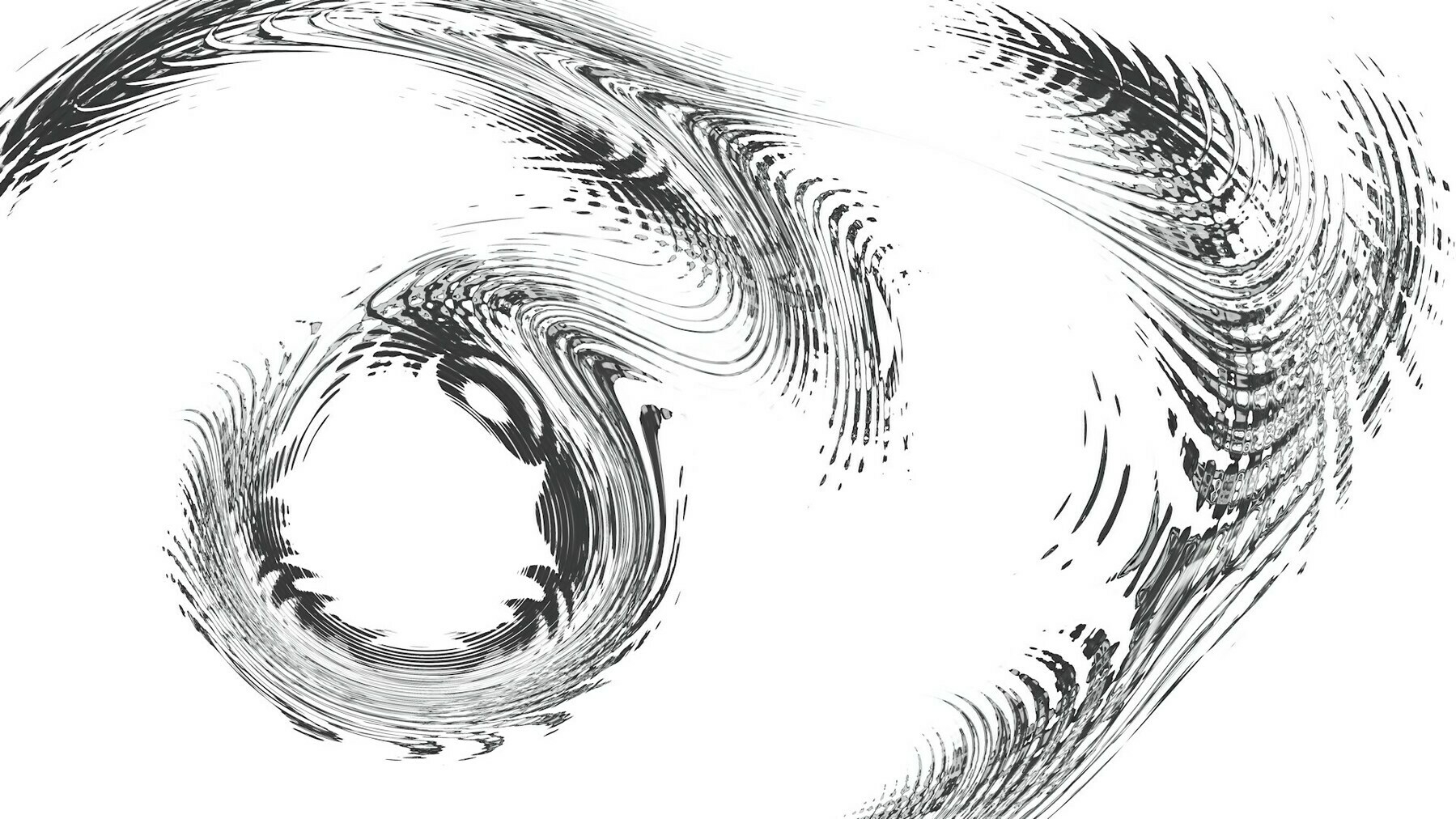
Interesting stuff from Mihnea Măruță, who explains the origin of the philosophy of accelerationism, which goes back to at least the Italian futurists. They provided the underpinnings for Mussolini’s fascism, and the updated version of this idea (“neo-reactionism”) underpins what’s happening in the US at the moment.
This movement, which considers democracy to have become an obstacle to capitalism, is called the neo-reactionary movement, abbreviated NRx.
It is also referred to as the “Dark Enlightenment.” That term belongs to the English philosopher Nick Land, and it’s also the title of one of his books.
And so we reach the philosophical heart of the matter, because, in fact, the most fitting explanation for everything that astonishes us in America today is a philosophical one, from which political, economic, and social consequences follow.
[…]
Accelerating society toward the future, at full throttle—this would be the path envisioned by the neo-reactionary movement.
[…]
[T]he accelerationist vision is to speed things up, to unleash a hyper-capitalism, a total techno-capitalism, an anarcho-capitalism—call it what you like—a system of private governance of a monarchical type, in which the president is the general manager, the CEO of a community-company, and citizens become shareholders of that state, transformed and run according to capitalist principles of efficiency and profit.
In the accelerationist view, nation-states are obsolete and need to be replaced by a global network of city-states and autonomous territories, if possible built from scratch.
[…]
For more details, you can look at a few existing projects: Culdesac in Arizona, Prospera in Honduras, Cabin in Texas, Neighborhood SF, NOMAD, or Praxis.
[…]
The world is changing before our eyes, and it’s essential that we understand in which direction. We’re not just dealing with whims or improvisations.
Source: Mihnea Măruță
Image: Logan Voss
So dull, so dehumanizing
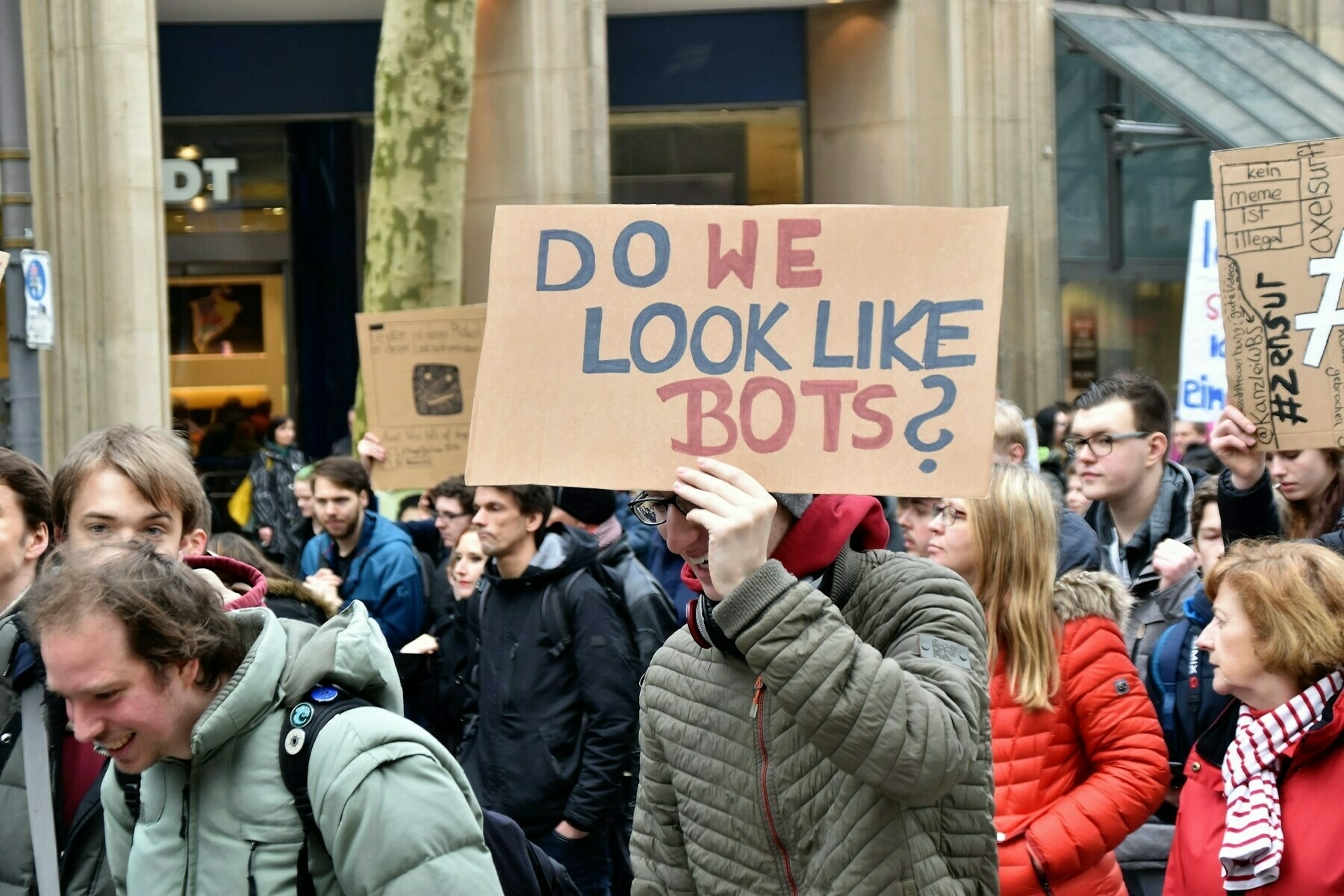
The thing that capitalists control is, unsurprisingly, capital. This controls how western societies work: if workers, minorities, or any other oppressed group gain too much power, capitalists use economic levers and controls to put people back in their place.
In this post, Audrey Watters reflects on the pandemic realisation about the need for student-centric education reform, and what has happened since. Which is the opposite of that.
I recently saw someone say (citation needed) that we might view this as the ongoing fallout from the pandemic, when, for a brief period, some workers were able to win some concessions from their employers: the ability to work from home, most notably. There has been an uptick in unionization and in public support for unions in the US too, reversing the past few decades' trends for both. So we shouldn’t be surprised that the response from management has been to fire people, to threaten to fire people, and to threaten to replace people with robots (or in today’s parlance, with chatbots or AI agents).
[…]
Arguably, much of the push for even more technology, even more automation, even more control, even more surveillance in the classroom is a consequence of the pandemic too. Recall the astonished recognition – it was ever-so-brief – that teaching was the most important and most difficult job and that teachers needed to not just be praised but compensated much much much better. And now, that’s been erased — purposefully; and conservatives and technologists and politicians alike feel it necessary to put teachers (read: women) back “in their place.”
[…]
During the pandemic, schools had the opportunity to radically rethink what education might look like – as a workplace for teachers, to be sure, but also as a place of growth and exploration and learning for students. Instead many opted to double-down on the worst aspects of school, to embrace some of the worst sorts of surveillance technologies – test-proctoring software, most egregiously.
There was — again, briefly — widespread revulsion about education technology during the pandemic. So dull, so dehumanizing. And now? Now we’re handing everything over to AI – a complete and total surrender to “the digital” at the expense of “the human,” letting the demands of the technology industry dictate pedagogy and research and assessment rather than respond to the needs of teachers or students or parents or communities.
Source: Second Breakfast
Image: Waldemar
Why are we sucking history through a straw?

One of the things I’m a bit concerned about when it comes to generative AI is the replacement of historically accurate images and text with AI slop. There’s a difference between what we’d like to be true, or what is plausible, and what actually happened.
Mike Caulfield shares a good example of this with the Abernathy brothers, who made several cross-country trips across the USA unaccompanied by adults. The AI version of this is nothing like the badass version above.
In 1910, at ages 10 and 6, they rode horseback from Oklahoma to New York City to meet ex-President Theodore Roosevelt, and became nationwide celebrities. They followed this up with a transcontinental horseride in 1911, setting a speed record. In 1913, pooling some money from earlier stunts, they bought an Indian 1000cc motorcycle, and drove it from Oklahoma to New York City — then retired from public life at the wise old ages of 13 and 10.
[…]
This is honestly the coolest picture I’ve seen in a month. Every bit of it is rich with meaning and resonance.
What are we doing here? Why are we sucking history through a straw?
I am at a loss for words.
Source: The End(s) of Argument
The only ruling principle is the total absence of purpose or seriousness
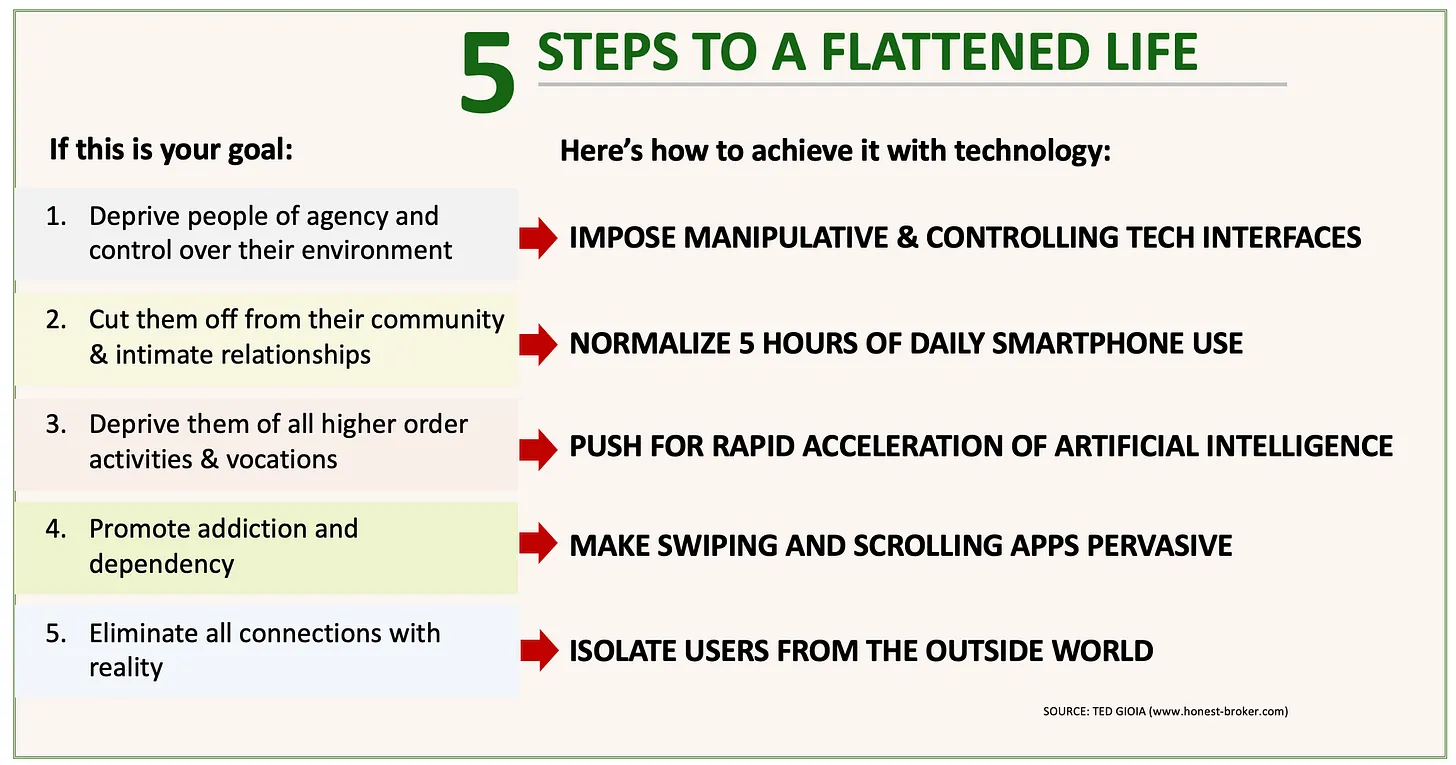
Frustrated by a lack of work coming in, and seeing people with 1/100th of my knowledge, experience, and skill being lauded on LinkedIn and elsewhere, I complained to my wife. She said a bunch of things in return, but one of them was something along the lines of, “the thing you don’t realise is that people just want to be entertained.”
This ‘State of the Culture’ speech is very US-centric, but nevertheless captures something about the specific moment we’re facing. Not just a Thomas Friedman-style ‘flat’ world, but a flattened world. As Cory Doctorow says, it’s five giant websites filled with screenshots of the other four. When’s the resistance to all this going to come? Or are we too busy being amused ourselves to death?
Twenty years ago, the culture was flat. Today it’s flattened.
“Corporations didn’t intend to make the culture stagnant and boring. All they really want is to impose standardization and predictability—because it’s more profitable.”
I still participate in many web platforms—I need to do it for my vocation. (But do I really? I’ve started to wonder.) But now they feel constraining.
Even worse, they now all feel the same.
Instead of connecting with people all over the world, I now get “streaming content” 24/7.
Facebook no longer wants me stay in touch with friends overseas, or former classmates, or distant relatives. Instead it serves up memes and stupid short videos.
And they are the exact same memes and videos playing non-stop on TikTok—and Instagram, Twitter, Threads, Bluesky, YouTube shorts, etc.
Every big web platforms feels the exact same.
That whole rich tapestry of my friends and family and colleagues has been replaced by the most shallow and flattened digital fluff. And this feeling of flattening is intensified by the lack of context or community.
The only ruling principle is the total absence of purpose or seriousness.
Source: The Honest Broker
Image: Ted Gioia / The Honest Broker
Reality, if you don’t sufficiently attend to it, has a tendency to kick your ass

Dorian Taylor is a certified Smart Person making things that I don’t even understand. What I want to focus on here, however, is his overview of Dr Kate Starbird’s recent talk.
Starbird gives an overview of the self-reinforcing right-wing disinformation ecosystem where participants are rewarded — implicitly or explicitly — for creating an alternate reality. It’s no surprise, therefore, that those who are taking charge in around the world are those that can use and amplify this disinformation.
It’s worth pointing out, as [this Bluesky post] (https://bsky.app/profile/suchmayer.bsky.social/post/3ljrwhvvitk2j) does, that it’s not as if the intention to create alternate realities hasn’t always been there. It’s just that with the consumer technologies available these days, there’s more scope for “free-for-all improv theatre.” It’s all entertainment; it’s a game with extremely serious consequences.
[The] right-wing (dis)information ecosystem is highly participatory, per Dr. Starbird: “improvised collaborations between witting agents and unwitting though willing crowds of sincere believers”. It’s a free-for-all improv theatre with all sorts of incentives for various actors to participate, from individual curiosity-seekers, to media personalities, to hostile state actors. It rewards participation and affords a conduit for any participant to get up on stage and perform for the audience, influence elite talking points, shape policy, and win fabulous cash prizes. The right-wing disinformation ratchet operates as follows:
- Political elites set the frame (“immigrants are criminals”),
- random participants make spurious claims (“they’re eating your pets”),
- the claims get boosted on social media by various influencers,
- they get aggregated and concentrated on—and further boosted by—fringe websites and blogs,
- Joe Rogan (or whoever) repeats the most salient claim on his podcast,
- the claim eventually makes it on Fox News,
- and is then rebroadcast from the bully pulpit,
- which energizes the mob and motivates them to continue.
The rest of the media ecosystem, by contrast, still adheres to a top-down model of broadcasting polished and vetted messages, researched and workshopped by professionals of rapidly dwindling efficacy.
[…]
On its face, fighting back against the right-wing bullshit apparatus amounts to a massive collective action problem—the very kind, with some adjustments, that said apparatus is great at mobilizing. So step one is to copy them. They have an advantage, though, which I find troubling: they don’t have to worry about reality.
[…]
How do you fight an information war when you’re on the side of reality? When reality usually doesn’t matter? The key, I am beginning to suspect, is except when it does. Reality, if you don’t sufficiently attend to it, has a tendency to kick your ass. This can be wielded as a weapon.
Source: The Making of Making Sense
Image: Elimende Inagella